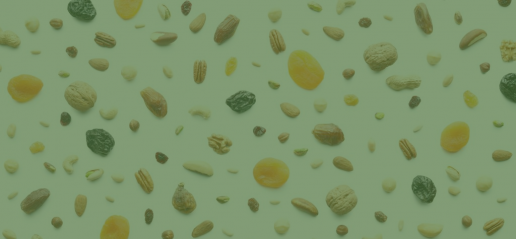Metabolizable Energy from Cashew Nuts is Less than that Predicted by Atwater Factors.
A Mediterranean Diet with an Enhanced Consumption of Extra Virgin Olive Oil and Pistachios Improves Pregnancy Outcomes in Women Without Gestational Diabetes Mellitus: A Sub-Analysis of the St. Carlos Gestational Diabetes Mellitus Prevention Study.
The Effect of Microwave Pretreatment on Micronutrient Contents, Oxidative Stability and Flavor Quality of Peanut Oil.
The purpose of the present study is to investigate the changes in extraction yield, physicochemical properties, micronutrients content, oxidative stability and flavor quality of cold pressed peanut oil extracted from microwave (MW) treated seeds (0, 1, 2, 3, 4, 5 min, 700 W). The acid value and peroxide value of extracted oil from MW-treated peanuts were slightly increased but far below the limit in the Codex standard. Compared with the untreated sample, a significant (p < 0.05) increase in extraction yield (by 33.75%), free phytosterols content (by 32.83%), free tocopherols content (by 51.36%) and induction period (by 168.93%) of oil extracted from 5 min MW-treated peanut were observed. MW pretreatment formed pyrazines which contribute to improving the nutty and roasty flavor of oil. In conclusion, MW pretreatment is a feasible method to improve the oil extraction yield and obtain the cold pressed peanut oil with longer shelf life and better flavor.
Effects of Pecan Nut (Carya illinoiensis) and Roselle Flower (Hibiscus sabdariffa) as Antioxidant and Antimicrobial Agents for Sardines (Sardina pilchardus).
The effects of pecan nut (Carya illinoinensis) and roselle flower (Hibiscus sabdariffa) as antioxidant and antimicrobial agents on shelf life extension of sardines (Sardina pilchardus) were evaluated over a period of 5 days at 7 ± 1 °C. Treatments consisted of the addition of 5% and 10% w/w pecan nut, 5% w/w roselle flower and a combination of 5% of each. Physicochemical (lipid oxidation, fatty acids, hexanal and biogenic amines), sensory and microbiological characteristics of fish samples were periodically analyzed. All treatments effectively improved physicochemical quality parameters, with 10% w/w pecan nut having the highest effectiveness. The presence of roselle flower reduced microbial growth. Our findings suggest that addition of a natural preservative combining pecan nut and roselle flower may extend the shelf life of fresh sardines during chilled storage while maintaining quality indexes.
Japan: MRLs Update
As for nuts and dried fruits, the following MRL were proposed:
- The MRL for fluensulfone in cranberry is increased from 0.3 ppm to 0.5 ppm.
- The MRL for tebufenpyrad in peanuts is lowered from 0.2 ppm to 0.01 ppm, and in apricot, cranberry and date from 2 ppm to 0.4 ppm.
The deadline for comments is February 17, 2019.
For further information, please contact us at inc@nutfruit.org.
The INC Launches the Allergens Toolkit
Recent data show that the number of people that suffers food allergy or food intolerance to some products is increasing. Approximately 15 million people in the United States have food allergies. The Food Allergy Research & Resource Program currently estimates the prevalence of IgE-mediated food allergies in the USA at 3.5 - 4.0% of the overall population. In children, it increased by 50% between 1997 and 2011. As for nuts, it is estimated that the prevalence of peanut and tree nut allergy in US children more than tripled between 1997 and 2008. In Europe, the prevalence of food allergy/intolerance in adults is approximately 5%.
With this in mind, the INC has created an Allergens Toolkit with practical information and tips on: What is food allergy?, How common are allergies?, Diagnosis, Labeling, Key aspects of allergen management, New findings and Resources.
You may download and print the Toolkit from the website www.nutfruit.org/industry/allergens-toolkit.
India: Cashew Kernels, Draft Standards
The Food Safety and Standards Authority of India notified the World Trade Organization of the Draft Food Safety and Standards (Food Products Standards and Food Additives) Amendment Regulations, 2018.
This notice calls for suggestions/views/comments on the draft related to different products, including cashew kernels. The draft standard defines the quality of the cashew kernels as well as the requirements they shall conform in terms of moisture content, acid-insoluble ash, defect tolerances, free fatty acid and peroxide value.
The deadline for comments is February 12, 2019.
File No. 1-116/Scientific Committee/Notif./2010-FSSAI
Amygdalin and Benzaldehyde Levels in California Almond (Prunus dulcis) Varietals
According to the results, ‘Aldrich’ has significantly higher concentrations of benzaldehyde in the headspace, the key contributor of the almond aroma.
Luo, K. K., Kim, D. A., Mitchell-Silbaugh, K. C., Huang, G., & Mitchell, A. E. (2017, November). Comparison of amygdalin and benzaldehyde levels in California almond (Prunus dulcis) varietals. In VII International Symposium on Almonds and Pistachios 1219 (pp. 1-8).
India: Additional Tariffs Delayed
On December 15, 2018, the Government of India announced that the entry into force of the additional tariffs is postponed until January 31, 2019. These tariffs, initially dated August 4, 2018, were first postponed until September 18, 2018 (see previous post), second postponed until November 2, 2018 (see previous post), and again postponed until December 17, 2018 (see previous post).
Notification N. 80/2018-Customs
EU: Common Customs Tariff Duties
Among others, the date foreseen for mandatory review of dates, fresh or dried, for use in the manufacture (excluding packing) of products of drink or food industries (CN 0804 10 00) is extended until December 31, 2023.
This regulation entered into force on December 29, 2018, and is applicable since January 1, 2019.
Council Regulation (EU) 2018/2069 of 20 December 2018

